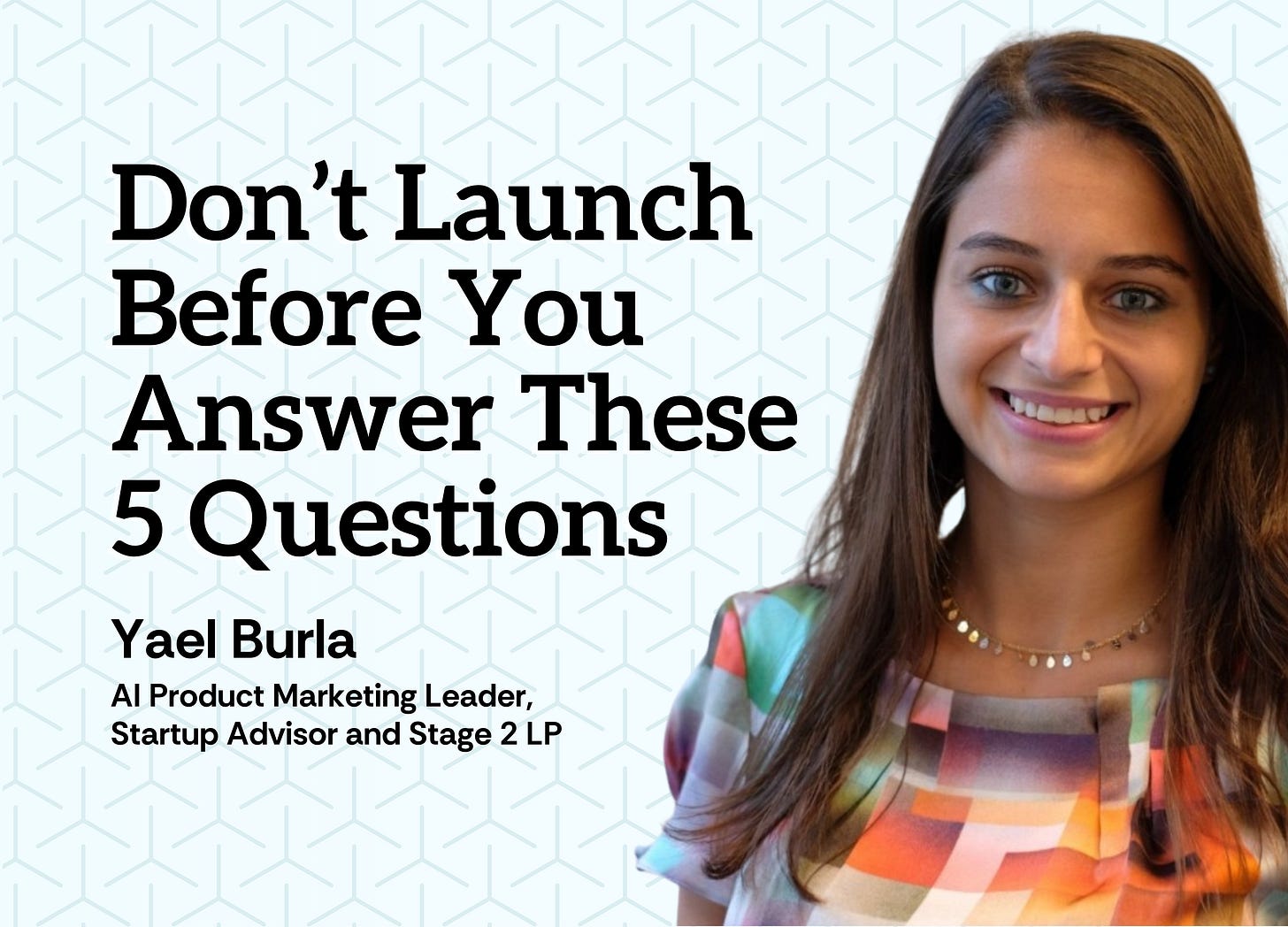DEAR STAGE 2: With AI our team can now spin up landing pages and campaigns in hours. But I’m worried we’re rushing too quickly into execution without knowing who we’re talking to or what message will land. How do I encourage everyone to take a step back and ensure our overall GTM strategy is right? ~STRATEGY OVER SPEED
DEAR STRATEGY OVER SPEED: “AI is allowing us to go faster, but potentially in the wrong direction.”
Back for part two of our PMM conversation, Yael Burla, Stage 2 LP and Director of Product Marketing at Vimeo, nailed it with this quote. She captured what I’ve been feeling over the last few months, witnessing far too many random acts of marketing.
It’s never been faster or cheaper to go to market. With a few tools and AI agents, you can build a website, generate a campaign, and fire off emails before lunch. But you can’t automate the human thinking needed to create a clear GTM strategy. Otherwise,you’re probably just adding noise without a clear sense of distribution And in today’s world, distribution is everything.
The core work of understanding your customers, defining your ICP, and positioning your product is more essential than ever. That’s where strong product marketing comes in!
Before you launch… ask these five questions
According to Yael, there are five questions every founder or early team must answer before launching anything:
Who are you targeting? (Both buyers and users)
What are their pain points, and what’s their willingness to pay?
How do they solve the problem today? (Who are you competing with?)
Where do they go to research this category (i.e. key channels)?
How do they describe the value you bring?
This is your GTM strategy foundation. Without it, you might build the right product… but market it to the wrong people in the wrong way.
Speed + Strategy = Smart GTM
Yael shared a recent example she experienced at Vimeo. Her team launched an AI-powered translation feature that was monetized through AI credits. It took off with enterprise users, but didn’t quite land with their self-serve base.
Why? The team hadn’t correctly identified who the self-serve ICP was or how they’d use the feature before the launch. “Post launch, we interviewed three cohorts of customers: those who didn’t use the feature, those who used it but didn’t buy, and those who both used and purchased more credits. The customers who bought were in e-learning, with an urgent need to reach global audiences and monetize their own businesses.”
That insight led to two key adjustments:
Updating where the feature was surfaced in the product, which drove a 91% uplift
Refining when it appeared in the user’s workflow to match intent to use
But here’s the kicker: none of that learning would have been possible without the upfront GTM work to hypothesize who the ICP is, and a commitment to digging deep when early signals didn’t match expectations.
Hypothesize, test, and learn
Founders love to “run experiments”, but not enough teams are disciplined in what this means. Experiments without a hypothesis are just guesses without clear direction. The best PMMs use customer data (recorded calls, usage analytics, win/loss interviews) to form testable hypotheses. Then they run targeted campaigns, measure, and iterate. Yael called out “Triangulate data from every part of the business - customers, competitors, usage, product feedback. That’s how you know when something’s working… or needs to change.”
You don’t necessarily win by being first. You win by taking big bets and being right. And in today’s market, being right means:
Knowing your exact customer
Understanding their pain and willingness to pay
Delivering the right message, in the right channel, at the right time
Until next week!




Love this. AI made shipping cheap — and misalignment expensive.
Before any launch:
1-page ICP: buyer/user, #1 pain, WTP, where they research. Disqualify fast.
Written experiment: Hypothesis → Audience → Channel → Metric → Timebox → Kill rule.
Distribution & exits: exact channels/partners + motion (inbound/outbound/partner) with customer-action exit criteria (“buyer did X”).
Speed + Hypothesis + Distribution = Sales Velocity.